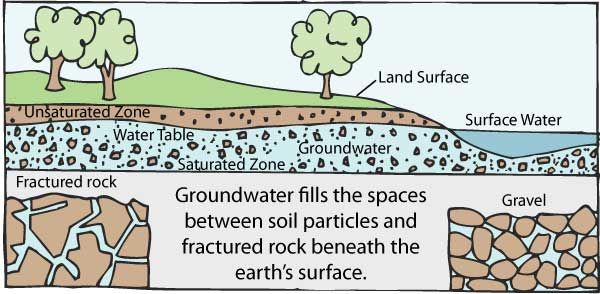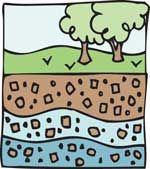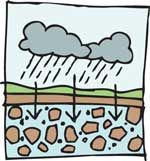Water stored in aquifers underground makes up the vast majority of accessible freshwater on Earth. Its abundance has fueled forays into drier locales, such as California’s Central Valley, enabling a boom in crop production (SN: 7/23/19). And overall, about 70 percent of the groundwater being used worldwide goes to agriculture. But surface waters — rivers and streams — rely on groundwater, too. When people pump too much too quickly, natural waterways begin to empty, compromising freshwater ecosystems.
A study in the Oct. 3 Nature finds that this ecological tipping point, what scientists call the environmental flow limit, has already been reached in 15 to 21 percent of watersheds tapped by humans. Most of those rivers and streams are in drier regions like parts of Mexico and northern India where groundwater is used for irrigation.
 Sustainable and wise use of groundwater is important
Sustainable and wise use of groundwater is important
If pumping continues at current rates, the authors estimate that by 2050, anywhere from 42 to 79 percent of pumped watersheds will have crossed this threshold.
“It’s really quite alarming,” says Inge de Graaf, a hydrologist at the University of Freiburg in Germany. “Groundwater and surface waters are intimately connected, and too much pumping creates a ticking time bomb.”
A healthy aquifer buttresses ecosystems against seasonal fluctuations in water availability, providing stability for resident plants and animals. But if too much groundwater is pumped, surface waters begin to seep into the aquifer, draining the life from many river and stream habitats.
De Graaf and colleagues created a statistical model that linked groundwater pumping with groundwater flow to rivers from 1960 to 2100. Projecting into the future, the researchers tweaked the model based on different climate projections, but kept groundwater pumping rates constant. The team found that more than half of watersheds where pumping occurs will likely cross this ecological threshold before 2050.
“We need to be thinking about this now, not in 10 years,” de Graaf says. “We can decrease pumping in these areas, develop better irrigation…. Our study shows us where to target more sustainable efforts.”
Groundwater is used for drinking water by more than 50 percent of the people in the United States, including almost everyone who lives in rural areas. The largest use for groundwater is to irrigate crops.

The area where water fills the aquifer is called the saturated zone (or saturation zone). The top of this zone is called the water table. The water table may be located only a foot below the ground’s surface or it can sit hundreds of feet down.

Aquifers are typically made up of gravel, sand, sandstone, or fractured rock, like limestone. Water can move through these materials because they have large connected spaces that make them permeable. The speed at which groundwater flows depends on the size of the spaces in the soil or rock and how well the spaces are connected.
Groundwater can be found almost everywhere. The water table may be deep or shallow; and may rise or fall depending on many factors. Heavy rains or melting snow may cause the water table to rise, or heavy pumping of groundwater supplies may cause the water table to fall.

Groundwater supplies are replenished, or recharged, by rain and snow melt that seeps down into the cracks and crevices beneath the land's surface. In some areas of the world, people face serious water shortages because groundwater is used faster than it is naturally replenished. In other areas groundwater is polluted by human activities.
Water in aquifers is brought to the surface naturally through a spring or can be discharged into lakes and streams. Groundwater can also be extracted through a well drilled into the aquifer. A well is a pipe in the ground that fills with groundwater. This water can be brought to the surface by a pump. Shallow wells may go dry if the water table falls below the bottom of the well. Some wells, called artesian wells, do not need a pump because of natural pressures that force the water up and out of the well.
In areas where material above the aquifer is permeable, pollutants can readily sink into groundwater supplies. Groundwater can be polluted by landfills, septic tanks, leaky underground gas tanks, and from overuse of fertilizers and pesticides. If groundwater becomes polluted, it will no longer be safe to drink.















